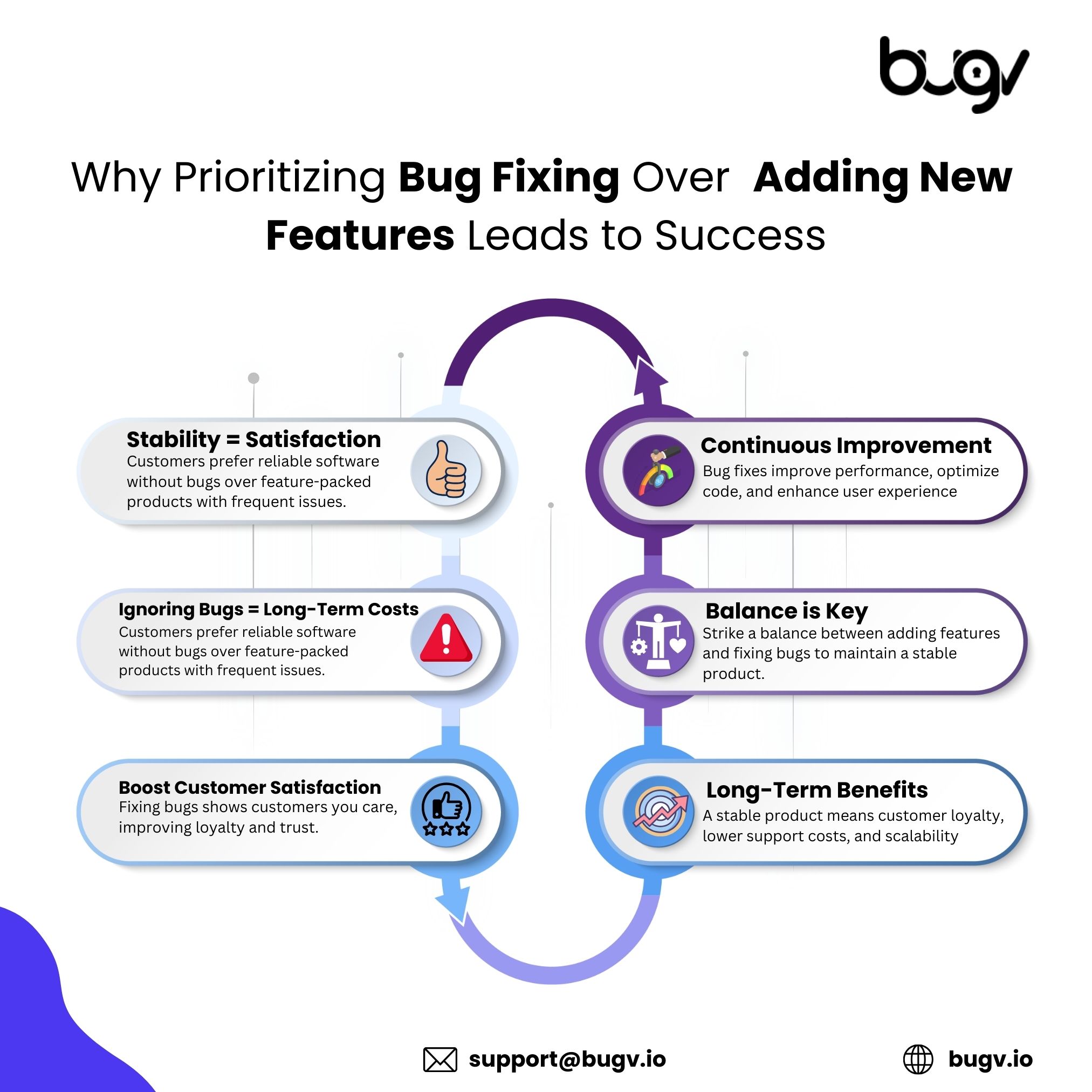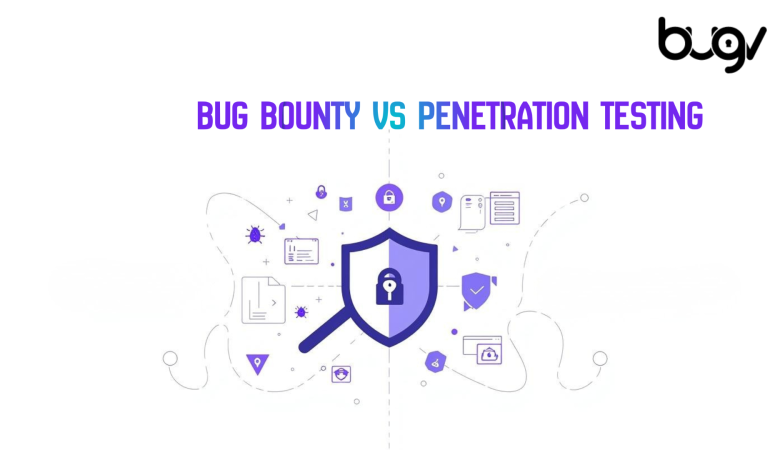In the fast-paced world of software development, companies often face a dilemma: should they prioritize adding new features to keep up with competitors, or should they focus on fixing existing bugs to provide a more stable user experience? While the allure of launching new features is strong, there is a growing recognition that prioritizing bug fixing often leads to higher customer satisfaction and long-term business success.
This blog will explore why focusing on resolving technical issues is not just beneficial but essential for maintaining a healthy relationship with users and ensuring the reliability of a software product.
1. The Value of Stability in Software Products
When customers use software, they seek a tool that helps them achieve their goals efficiently and reliably. Whether it’s a business application, a social platform, or an e-commerce site, stability is a key factor in a positive user experience. No matter how innovative or feature-rich a product may be, its value quickly diminishes if users encounter bugs, crashes, or unreliable performance.
For example, imagine using a banking app that constantly crashes when transferring money or a productivity tool that loses your work due to frequent glitches. These issues can lead to frustration, loss of trust, and even a switch to competitors offering more stable alternatives. In contrast, a well-functioning, stable application creates a sense of security and trust, encouraging customers to stay loyal and recommend the product to others.
2. The Cost of Neglecting Bug Fixes
When companies prioritize adding new features over fixing bugs, they risk creating a fragile, unstable product that frustrates users. Over time, this approach can lead to a negative spiral where users grow increasingly dissatisfied, and the software becomes bloated with problems that are harder to fix later.
Technical debt is a term often used to describe the hidden cost of neglecting maintenance and bug fixing. The more unresolved issues pile up, the harder and more expensive it becomes to address them in the future. Additionally, launching new features on top of a shaky foundation increases the risk of introducing even more bugs, compounding the problem. This can overwhelm the development team and diminish their ability to deliver a quality product.
Consider the real-world example of companies that have experienced significant user backlash due to unresolved bugs. In such cases, the negative reviews, support tickets, and complaints can severely damage the company’s reputation and result in a loss of customers. Worse, it can take considerable time and resources to regain customer trust and stabilize the product after the damage has been done.
3. Enhancing Customer Satisfaction by Addressing Issues
In today’s competitive marketplace, customer satisfaction is a crucial factor in a company’s success. Users value products that not only offer innovative features but also deliver a seamless, reliable experience. Fixing bugs and ensuring a smooth user experience shows that a company cares about its customers and their needs.
Addressing user-reported issues helps build a stronger relationship between the company and its customers. When customers see that their concerns are taken seriously and resolved in a timely manner, it increases their loyalty to the product. They feel heard and respected, which can significantly improve their perception of the brand.
Moreover, businesses that focus on fixing bugs often see a decrease in customer support costs. Fewer bugs mean fewer user complaints and support requests, freeing up resources that can be used for further product improvements or expansion. This creates a win-win situation where users get a better experience, and the company enjoys reduced operational costs.
4. Bug Fixes as a Path to Continuous Improvement
Fixing bugs doesn’t just benefit customers—it also contributes to the overall health and quality of the software. Each bug fix can serve as an opportunity to review code, optimize performance, and improve system architecture. A culture that emphasizes fixing bugs encourages continuous improvement and high standards in software development.
It is important to note that bug fixes often lead to valuable insights into how users interact with the product. By addressing user-reported issues, development teams can identify patterns, usability challenges, or areas of the software that need redesign or optimization. This iterative process of fixing, testing, and refining helps to create a more polished and user-friendly product.
Additionally, prioritizing bug fixing over new features can lead to a more efficient development cycle in the long run. When the core product is stable and well-maintained, future features can be developed on a solid foundation, reducing the risk of introducing new problems. This prevents the cycle of chasing after bugs post-launch and allows teams to focus on creating genuinely valuable enhancements.
5. Striking the Right Balance Between Bug Fixing and New Features
While the importance of bug fixing cannot be overstated, it is also essential to strike a balance. Companies need to innovate and introduce new features to stay competitive in the market, but this should never come at the cost of product stability.
A well-thought-out product roadmap can help balance both priorities. By allocating dedicated resources and time to fix bugs in each release cycle, companies can ensure that they address critical issues while still delivering valuable new features. Agile methodologies, which emphasize iterative development and continuous feedback, can also support this approach by allowing teams to be flexible and responsive to both user needs and technical challenges.
Product managers and developers should maintain open lines of communication with their users, actively seeking feedback and prioritizing fixes that have the most impact on the overall user experience. Regularly reviewing and triaging bug reports ensures that the most critical issues are addressed promptly, while also keeping room for innovation and growth.
6. Long-Term Benefits of Prioritizing Bug Fixing
The long-term benefits of prioritizing bug fixing are clear:
- Customer Loyalty: When customers can rely on a stable, functioning product, they are more likely to remain loyal and continue using the software.
- Brand Reputation: A reputation for delivering a high-quality, reliable product can differentiate a company from its competitors and attract more customers.
- Cost Efficiency: Reducing the volume of bugs and technical issues lowers the cost of customer support, minimizes downtime, and ensures smoother operations for both the development team and end-users.
- Scalability: A stable, well-maintained product is easier to scale and improve over time, allowing the company to introduce new features without risking a decline in quality.

Conclusion
In conclusion, while new features are often exciting and can bring short-term attention, the true success of any software product lies in its reliability and stability. Prioritizing bug fixing over the continuous addition of new features leads to a more satisfying user experience, builds trust, and strengthens the long-term success of the product.
Companies that understand the value of a stable product will not only retain their customers but also create a solid foundation for future innovation and growth. In an increasingly competitive market, the businesses that thrive will be the ones that prioritize quality over quantity, ensuring their software delivers not just innovation but reliability.












